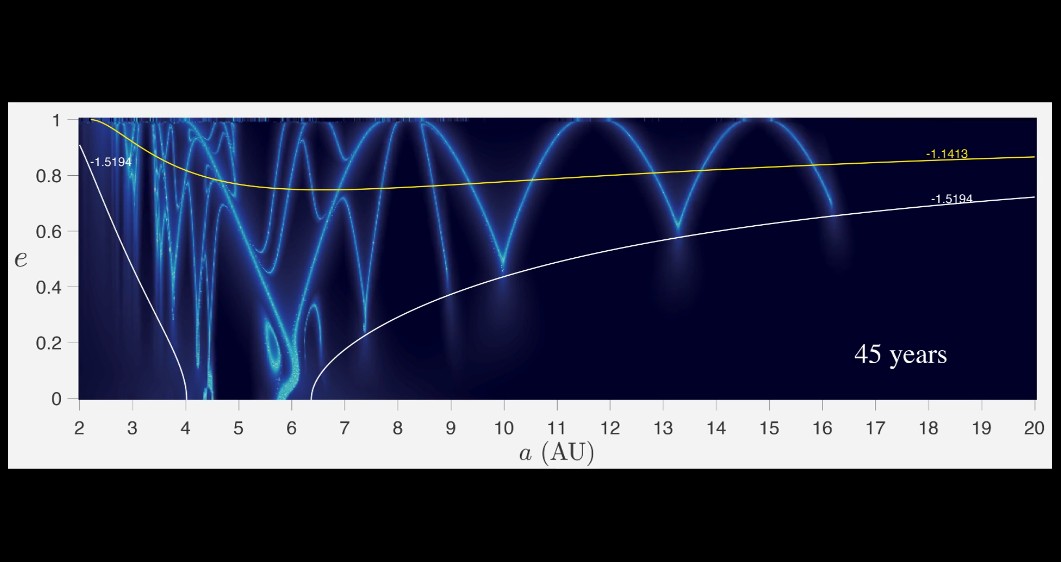Researchers recently identified what they call a "highway network" in the Solar System. If the term may seem surprising, it simply designates a way to travel faster than what is currently possible.
What if we could cross the Solar System faster ? In a study published in the journal Science Advances on November 25, 2020, researchers from the University of California, San Diego (USA) say they have identified a "highway network" in space. They analyzed the structure of this network as well as the effects that it can have on the movement of comets and other asteroids. In their publication, the scientists describe what they call "spatial manifolds". It is about the varieties in the geometric sense of a space that we obtain by gluing as when we build a cube by drawing its pattern beforehand on the paper.

“We reveal remarkable ornamental structure and hitherto undetected varieties connected by a series of arcs that stretch from the asteroid belt to Uranus and beyond “, explained the directors of the study in a press release.
According to scientists, this highway network can allow comets and asteroids near Jupiter to travel to Neptune in just a decade. Estimates suggest that in less than a century, these objects could travel about one hundred astronomical units (AU). It should be remembered in passing that one AU corresponds approximately to the distance between the Earth and the Sun, i.e. nearly 150 million kilometers. However, in general when one evokes such distances, it is more a question of hundreds of thousands, even millions of years!
Researchers remind that the strongest varieties are related to the planet Jupiter. This is not surprising, because this planet is also famous for exerting a very strong gravitational force . These varieties have arc structures having an effect on the comets of the Jupiter family or on the centaurs, these small icy bodies orbiting the Sun between Jupiter and Neptune.
However, scientists are not surprised that Jupiter can be linked to decade-like shifts . Indeed, some space missions have already exploited this surprising feature. This is the case of the Voyager 1 and Voyager 2 missions during which Jupiter's gravity was used to accelerate the probes towards the outer reaches of the Solar System.